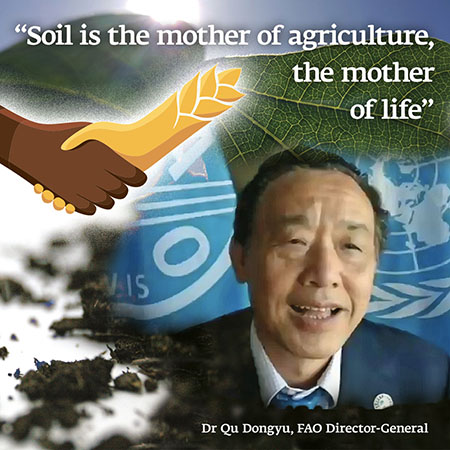The Global Soil Partnership (GSP) is a globally recognized mechanism established in 2012. Our mission is to position soils in the Global Agenda through collective action. Our key objectives are to promote Sustainable Soil Management (SSM) and improve soil governance to guarantee healthy and productive soils, and support the provision of essential ecosystem services towards food security and improved nutrition, climate change adaptation and mitigation, and sustainable development. Learn more about us here.
Why a Global Soil Partnership?
Soil is an essential resource and a vital part of the natural environment from which most of the global food is produced. At the same time, soil provides living space for humans, as well as essential ecosystem services which are important for water regulation and supply, climate regulation, biodiversity conservation, carbon sequestration and cultural services. But soils are under pressure from increases in population, higher demands for food and competing land uses. Approximately 33% of our global soils are degraded and policy makers around the world are exploring opportunities to embrace sustainable development via the sustainable development goals.
Although the importance of soils seems clear, in the past it has not received due attention in terms of its use and management, since soils were often considered an infinite resource that will always be able to provide us with its ecosystem services. However, this is not the case and there is an urgent need to raise awareness on the importance of soil, especially the need to protect soils and use them sustainably.
The Global Soil Partnership was established in December 2012 as a mechanism to develop a strong interactive partnership and enhanced collaboration and synergy of efforts between all stakeholders. From land users through to policy makers, one of the key objectives of the GSP is to improve the governance and promote sustainable management of soils.
Since its creation, the GSP has become an important partnership where global soil issues are discussed and addressed by multiple stakeholders. Key outputs demonstrate that the partnership was needed to fill an existing gap in the promotion of sustainable soil management.
